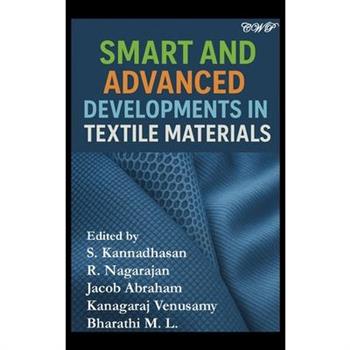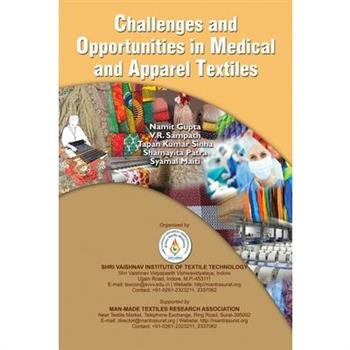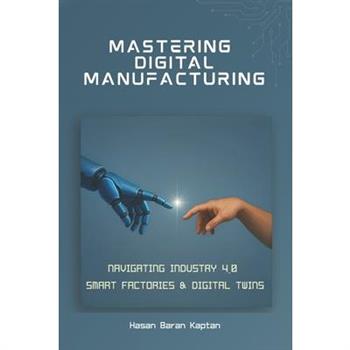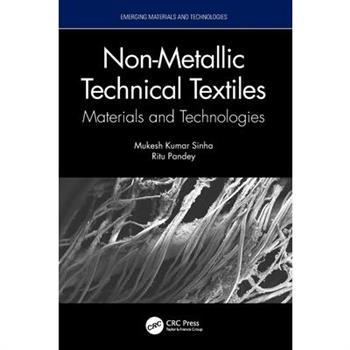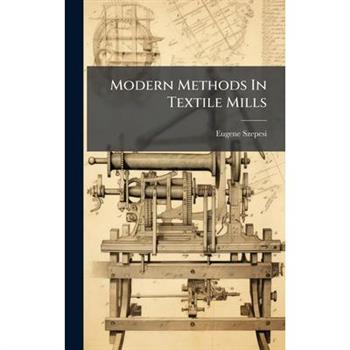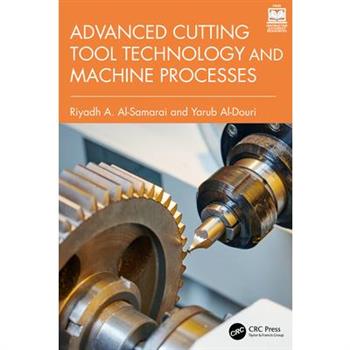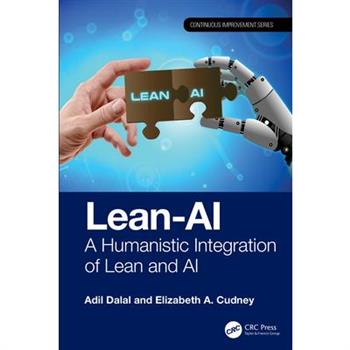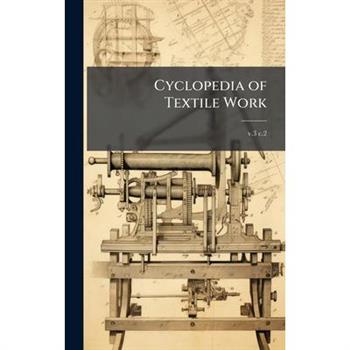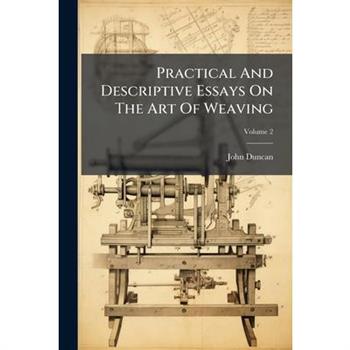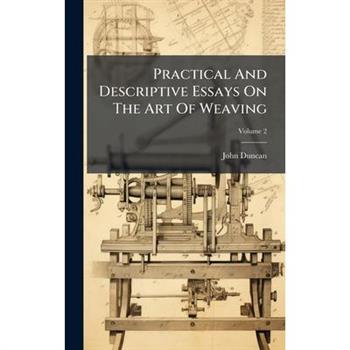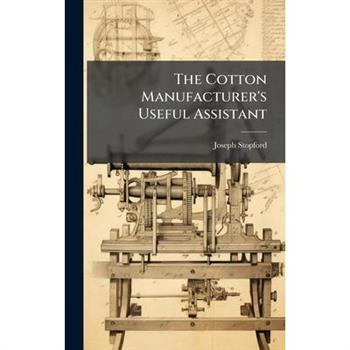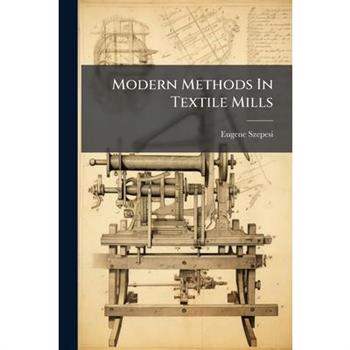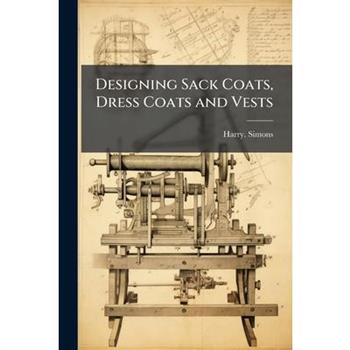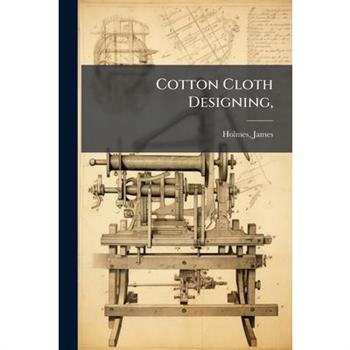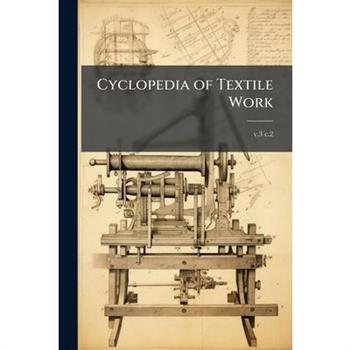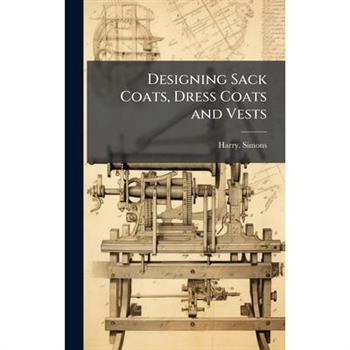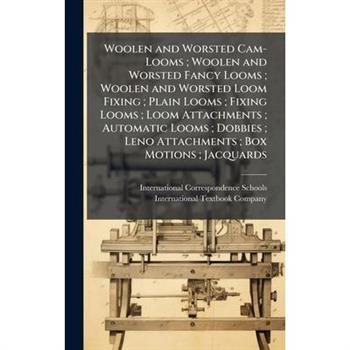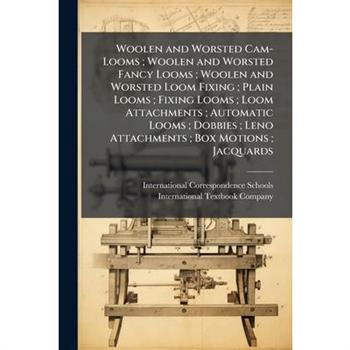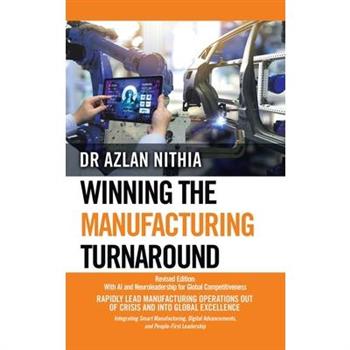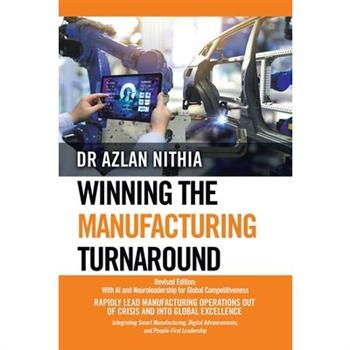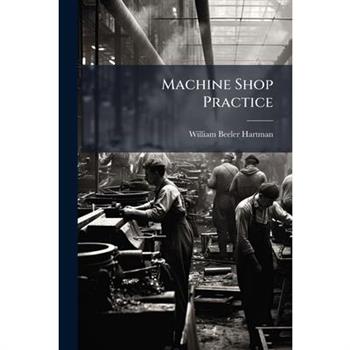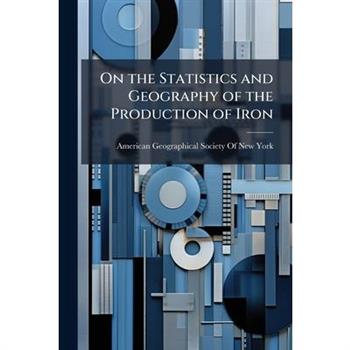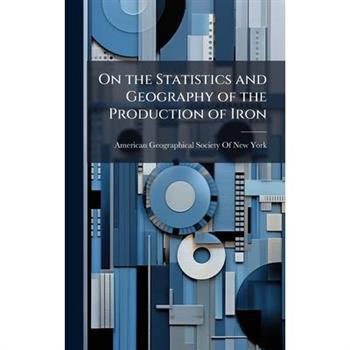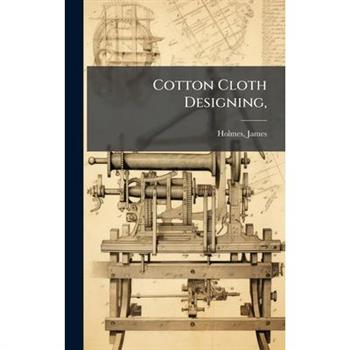Forbidden Lego
It just may be impossible to exhaust the creative potential of LEGO(R) bricks. With an active imagination as your guide, there are endless possibilities----provided you follow the LEGO Company's official (and sensible) rules. This means no cutting or tampering with bricks, creating models that shoot unapproved projectiles, or using non-standard parts with any LEGO product. After all, those little precision-molded ABS bricks can be dangerous on the wrong hands! Well, toss those rules out the window. Forbidden LEGO introduces you to the type of free-style building that LEGO's master builders do for fun in the back room. Using LEGO bricks in combination with common household materials (from rubber bands and glue to plastic spoons and ping-pong balls) along with some very unorthodox building techniques, you'll learn to create working models that LEGO would never endorse. Try your hand at a toy gun that shoots LEGO plates, a candy catapult, a high voltage LEGO vehicle, a continuous-fire ping-pong ball launcher, and other useless but incredibly fun inventions. Once you get into the spirit, you'll want to try inventing your own rule-breaking models. Forbidden Lego's authors share tips and tricks that will inspire you and help you turn your visions into reality. Nothing's against the rules in this book!
Smart and Advanced Developments in Textile Materials
Wild Weave
A guide to incorporating natural materials and fostering experimentation in woven projects. In Wild Weave, textile artist Alice Fox encourages an open-minded and playful approach to creating beautiful and innovative woven artworks. Fox promotes the idea of engaging with simple tools and technology, as well as making use of locally sourced and unconventional materials, all of which can produce exciting results. In this book, packed full of introductory information, Fox covers everything from the historical background of weaving to how weaving crosses boundaries among textiles, basketry, art, and craft. She includes an introduction to frames, heddles, and other simple tools, explaining how you can use the most basic equipment including found, homemade, and repurposed structures. Chock-full of practical advice and beautiful photography of the artist's own work, Wild Weave covers: - Sourcing materials and an introduction to equipment. - Weaving on frames, in the round, three-dimensionally, and ephemerally. - Examples of weave-based ideas for recording landscape and "spirit of place." - Techniques for working with alternative materials, which may be rigid or fragile. This book is ideal for anyone wanting to develop their textile art practice, or for newcomers seeking inspiration without the requirements of expensive tools or materials.
8-Step Problem-Solving Method
8-STEP PROBLEM-SOLVING METHODBy JJ Andrade, MBAIn today's fast-paced business environment, the ability to solve complex problems isn't just valuable-it's essential. But why do so many improvement efforts fail to deliver lasting results? Why do organizations find themselves solving the same problems repeatedly? And how can leaders build teams that don't just fix issues but prevent them from recurring?The 8-Step Problem-Solving Method offers a revolutionary approach that transforms traditional problem-solving into a powerful engine for organizational evolution. Drawing from the best of Lean, Six Sigma, systems thinking, and behavioral science, this comprehensive methodology provides a clear, repeatable framework that works across any industry or function.8 Steps Method creates sustainable change by addressing both technical and human dimensions of improvement. In this groundbreaking book, JJ Andrade reveals: Why most improvement efforts fail to sustain, and how to break the cycleA powerful visual framework that makes complex problem-solving accessible to everyoneHow to identify the correct problems to solve-those with the most significant leverage and impactProven techniques to move beyond symptoms to root causes that drive real transformationStrategic approaches to designing countermeasures that address both technical and cultural factorsImplementation methods that overcome resistance and build ownership at all levelsA revolutionary approach to sustainment that makes regression impossibleThe counterintuitive power of starting with Step 8 before tackling new problemsTransform the way your organization solves problems. Transform your results. Transform your future.
Mastering Digital Manufacturing
Every day, manufacturing teams balance delivery commitments, quality escapes, inventory constraints, and the realities of ageing assets. Many have piloted an IoT proof-of-concept here, a dashboard there, and wondered why the gains did not scale. This book addresses that moment. It is written for the people who make things and keep them running, professionals who know their processes intimately and want technology to assist rather than complicate.Digitalisation can appear to be a wall of terminology. This book takes a different path. In clear, plain language, it explains how a living digital thread connects design, planning, production, and service; how edge-to-cloud systems and closed-loop digital twins turn data into timely action; how computer vision, collaborative robots and autonomous mobile robots, and AR/XR work instructions elevate human performance; and how composable MES, PLM, and automation enable change to scale safely and sustainably. No hype, only what works in real facilities.The book presents concise, candid case studies from factories comparable to yours, then distils them into patterns that can be reused. It provides annotated reference architectures, value scorecards, and practical checklists, as well as tools to move from pilots to production while maintaining momentum. Throughout, it keeps people at the centre: building capability, reshaping roles, and making sustainability measurable, from energy-aware scheduling to Scope 3 visibility, because progress that does not endure is not progress.Whether you are an operations leader, plant or maintenance manager, manufacturing or controls engineer, data and AI practitioner, solution architect, or SME owner, this book meets you at your current stage. Read it cover to cover, or consult the chapter most relevant to your immediate priorities. In either case, you will find a clear path from first proof-point to site-wide adoption.Improving the way things are made remains among the most meaningful endeavours. Start where you are, use what you have, and take the next right step. The factory of the future is not elsewhere; it is the one you will build next.
Industry 4.0 and Intelligent Manufacturing Technologies
The world is undergoing a transformation driven by Industry 4.0 and intelligent manufacturing technologies. This book explores aspects of well-being and collaboration in industrial systems which were underscored by automation and security focus.Industry 4.0 and Intelligent Manufacturing Technologies explores the different ways in which technology disrupts and revolutionizes industrial management. It discusses the connection between engineering, science, and management, aiming to assist companies, researchers, and professionals navigate and excel in this transformation era. This book offers insights by examining Industry 4.0 and intelligent manufacturing technologies. It looks into the driving forces behind digitalization, automation, intelligent process control, artificial intelligence, and additive manufacturing. Lastly, the book showcases the seamless integration of advanced digital technologies into manufacturing and industrial processes.This book aims to attract managers and researchers to the field of industrial engineering. It also offers valuable insights for students, graduates, and educators focusing on industrial and business management. However, the content is not exclusive to these audiences and will be engaging for any reader with an interest in the subject matter.
Non-Metallic Technical Textiles
This book describes various aspects of technical textiles and materials, emerging technologies, plant by-products, ultrafine fibers, functional fibers, and fabrics, covering the entire spectrum of technical textiles. It covers the fundamental aspects of emerging technology, materials, and processes. It also discusses various futuristic potential nanofibrous material spun via needleless technology and their inherent properties utilized for creating functional applications in the field of technical textiles.Features: Covers the fundamentals of technical fibers and their processing technologies. Explores natural fibers from agro-residue for high-value technical textiles. Presents up-to-date summary of technical textiles and associated technology. Highlights research and development studies data translated into product-oriented research and practical applications. Identifies the coloring ability of prevailing and new sources of pigments from bioresources. The book is aimed at researchers, professionals, and graduate students in textile and industrial engineering, materials science, and engineering, including apparel engineering.
Biopolymers and Biopolymer Blends
Biopolymer and Biopolymer Blends: Fundamentals, Processes, and Emerging Applications showcases the potential of biopolymers as alternative sources to conventional nonbiodegradable petroleum-based polymers. It discusses fundamentals of biopolymers and biopolymer blends from natural and synthetic sources, synthesis, and characterization. It also describes development of desired performance for specific applications in 3D printing and other emerging applications in industry, including packaging, pulp and paper, agriculture, biomedical, and marine. Introduces the fundamentals, synthesis, processing, and structural and functional properties of biopolymers and biopolymer blends Explains the fundamental framework of biopolymer blends in 3D printing, featuring current technologies, printing materials, and commercialization of biopolymers in 3D printing Reviews emerging applications, including active food packaging, electronic, antimicrobial, environmental, and more Discusses current challenges and futures prospects. Providing readers with a detailed overview of the latest advances in the field and a wealth of applications, this work will appeal to researchers in materials science and engineering, biotechnology, and related disciplines.
The Domestic Manufacturer S Assistant And Family Directory In The Arts Of Weaving And Dyeing Comprehending Aplain System Of Directions
"The Domestic Manufacturer S Assistant And Family Directory In The Arts Of Weaving And Dyeing Comprehending Aplain System Of Directions" is a comprehensive guide dating back to 1817, offering a detailed look into the practices of weaving and dyeing. Authored by J & R. Bronson, this historical text provides a plain system of directions for those engaged in domestic manufacturing. It serves as a valuable resource for understanding textile production techniques of the early 19th century.This book provides insights into the skills and knowledge necessary for creating textiles within a household setting. It offers historical context and practical knowledge, making it an essential read for anyone interested in the history of textile arts and crafts.This work has been selected by scholars as being culturally important, and is part of the knowledge base of civilization as we know it. This work was reproduced from the original artifact, and remains as true to the original work as possible. Therefore, you will see the original copyright references, library stamps (as most of these works have been housed in our most important libraries around the world), and other notations in the work.This work is in the public domain in the United States of America, and possibly other nations. Within the United States, you may freely copy and distribute this work, as no entity (individual or corporate) has a copyright on the body of the work.As a reproduction of a historical artifact, this work may contain missing or blurred pages, poor pictures, errant marks, etc. Scholars believe, and we concur, that this work is important enough to be preserved, reproduced, and made generally available to the public. We appreciate your support of the preservation process, and thank you for being an important part of keeping this knowledge alive and relevant.
Modern Methods In Textile Mills
Modern Methods In Textile Mills explores contemporary advancements and techniques utilized in the textile industry. This book provides insights into the evolving landscape of textile manufacturing, offering readers a detailed overview of modern processes and technologies shaping the field. It serves as a valuable resource for industry professionals and anyone interested in understanding the innovations driving the textile sector forward.This work has been selected by scholars as being culturally important, and is part of the knowledge base of civilization as we know it. This work was reproduced from the original artifact, and remains as true to the original work as possible. Therefore, you will see the original copyright references, library stamps (as most of these works have been housed in our most important libraries around the world), and other notations in the work.This work is in the public domain in the United States of America, and possibly other nations. Within the United States, you may freely copy and distribute this work, as no entity (individual or corporate) has a copyright on the body of the work.As a reproduction of a historical artifact, this work may contain missing or blurred pages, poor pictures, errant marks, etc. Scholars believe, and we concur, that this work is important enough to be preserved, reproduced, and made generally available to the public. We appreciate your support of the preservation process, and thank you for being an important part of keeping this knowledge alive and relevant.
The Dyeing of Wool
"The Dyeing of Wool, Including Wool-Printing" is a historical treatise on the methods and materials used in dyeing wool. Originally published in 1905, this work provides detailed insights into the processes employed in the textile industry at the turn of the 20th century. It covers a range of techniques, from the preparation of the wool to the application of various dyestuffs. This edition comprises issues 27-36, 38-39, 41, and 43-46 of the original publication. This book is a valuable resource for historians of technology, textile artists, and anyone interested in the historical practices of wool dyeing and printing. The detailed descriptions and insights into the dyestuffs used make it a fascinating read for those studying the evolution of textile production.This work has been selected by scholars as being culturally important, and is part of the knowledge base of civilization as we know it. This work was reproduced from the original artifact, and remains as true to the original work as possible. Therefore, you will see the original copyright references, library stamps (as most of these works have been housed in our most important libraries around the world), and other notations in the work.This work is in the public domain in the United States of America, and possibly other nations. Within the United States, you may freely copy and distribute this work, as no entity (individual or corporate) has a copyright on the body of the work.As a reproduction of a historical artifact, this work may contain missing or blurred pages, poor pictures, errant marks, etc. Scholars believe, and we concur, that this work is important enough to be preserved, reproduced, and made generally available to the public. We appreciate your support of the preservation process, and thank you for being an important part of keeping this knowledge alive and relevant.
Advanced Cutting Tool Technology and Machine Processes
Today's industry heavily relies on advanced cutting tool technology and manufacturing techniques to enhance quality and efficiency in production. This undergraduate-level textbook is dedicated to exploring the latest developments that enhance tool performance, lower costs, and boost productivity. The mission of this textbook is to provide readers with a thorough understanding of cutting-edge technologies and methods used in cutting tools and industrial processes.Advanced Cutting Tool Technology and Machine Processes steps into the world of modern cutting tools used in the metallurgical industry. Each tool is meticulously dissected, showcasing its distinctive features and methods of operation. The text explores advanced metal-cutting and processing techniques, including laser, water, and plasma cutting. By covering these cutting-edge methods, students and professionals can remain at the forefront of industry advancements. In addition to detailed tool descriptions, this textbook offers practical guidance on utilizing tools effectively and safely, as well as tips on tool maintenance to ensure longevity and peak performance. To enhance comprehension, this textbook incorporates exercise problems, case studies, and practical examples that illustrate how theoretical knowledge is applied in real-world scenarios. This hands-on approach aids in the development of problem-solving skills and the practical application of concepts. Lastly, this textbook provides comprehensive information on the properties of various metals and how to handle them effectively. This knowledge is crucial in selecting the appropriate tools for each type of metal, guaranteeing precision and efficiency in cutting processes.This textbook is ideal for undergraduate students in production, materials, industrial, mechatronics, marine, mechanical, and manufacturing engineering programs, and is also useful for graduate programs related to higher-level machining topics, as well as professional engineers and technicians.Figure slides and a solutions manual for available for qualified textbook adoptions.
Lean-AI
We stand at the threshold of a transformative era where the convergence of Lean methodologies and artificial intelligence (AI) is redefining operational excellence. This book is a pioneering exploration of this integration, offering a roadmap for organizations seeking to harness AI's potential while preserving the human-centric values at the heart of Lean. It provides a deep dive into how Lean principles - focused on efficiency, waste reduction, and continuous improvement - can be enhanced through AI-driven intelligence, agility, and innovation. More than just a technical guide, this book is an invitation to rethink the future of work, leadership and culture in an AI-powered world.Lean-AI: A Humanistic Integration of Lean and AI empowers readers with the tools and insights necessary to navigate the evolving landscape of Industry 5.0+. Through real-world case studies, practical strategies, and in-depth discussions, this book illustrates how organizations can leverage AI to accelerate Lean transformation, enhance human performance, and drive sustainable growth. Readers will gain actionable knowledge on integrating AI with Lean tools such as 5S, poka-yoke, single minute exchange of dies, total productive maintenance, and value stream mapping, among others. The book also highlights the critical role of leadership and culture in ensuring AI-driven Lean implementations uplift rather than replace human capabilities.This book is designed for forward-thinking innovators, business leaders, Lean practitioners, and AI enthusiasts eager to explore the synergy between technology and human-centric process improvement. Whether you are an executive driving digital transformation, a Lean expert looking to modernize methodologies, or a professional seeking to understand AI's role in operational excellence, this book provides a strategic guide to mastering Lean-AI integration. It is an essential read for those ready to challenge conventional paradigms and embrace the future of efficiency, collaboration and intelligent innovation.
The Most Important Clock in America
During the years of 1767-1770 David Rittenhouse designed and produced two orreries, one for Princeton Univ. and one for the Univ. of PA. During the last two years of this interval he also produced two 30-day musical tall-cased clocks. The first clock, built in 1769, is currently owned by the PA Hospital. The following year (1770) Rittenhouse made a second tall-case musical clock, which was more elaborate than the first. This clock, currently owned by Drexel Univ., is a very good example of Rittenhouse's work as it has experienced only minor changes over the years. This was the masterpiece of his clock-making career and is a national historical treasure. Here is a detailed analysis of the various gears in the clock. 100+ drawings and full-color photos.
Building Resilience Into Production: Contemporary Challenges for the Future
This book contains the proceedings of the 27th International Conference on Production Research (ICPR). ICPR is a biennial conference that has been hosted for more than a half century. It is regarded worldwide as one of the leading conferences on production research, industrial engineering, and related subjects. This year's conference has a special focus on advances in production resilience through digital technologies, sustainability and the management of disruptive events. This book is of interest to researchers, students, and professionals in industry.
Polyurethanes
Polyurethanes are among the most commercially significant specialty polymers, with an annual production volume of 25 million metric tons. Their manufacturing process utilizes liquid reactive components, and the wide variety of starting materials enables the creation of a diverse range of products for the consumer, transportation, industrial, and construction industries. This book discusses the synthesis of isocyanates and polyols, along with their polymerization, linking the structures of the starting components to the polymer morphology and mechanical properties of the resulting polymers. It provides a fundamental introduction to polymer physics, processing, and foam formation while focusing on three main applications of polyurethane: low-density rigid foam, low-density flexible foam, and elastomers. The book is suitable for graduate students in chemistry, materials science, and industrial chemistry, as well as for those new to the polyurethanes industry.
Engineered Polyvinyl Pyrrolidone Products by Microwave Techniques: Processing, Characterization, and Applications
Engineered Polyvinyl Pyrrolidone Products by Microwave Techniques: Processing, Characterization, and Applications is an indispensable guide to customizing polyvinyl pyrrolidone (PVP) properties through derivatization using microwave techniques. The book showcases the benefits of microwave radiation in polymerization, providing consistency and reproducibility without altering the polymer structure. It covers the successful modifications achieved and underscores the unique advantages of these techniques. The book delves into diverse applications of these specialized plastics in agriculture, medicine, and consumer products. It also discusses scaling up synthesis processes for commercial production, making it a valuable reference for understanding the potential of engineered polymeric materials.
Cyclopedia of Textile Work
"Cyclopedia of Textile Work" (v.3 c.2) is a comprehensive reference library covering various aspects of the textile industry. This volume provides detailed information on cotton, woolen, and worsted yarn manufacture, as well as weaving, designing, chemistry, dyeing, finishing, knitting, and allied subjects. A valuable resource for both professionals and enthusiasts, this book offers a wealth of knowledge on historical textile processes and techniques.Originally published in 1907, this book offers insights into the textile practices of the early 20th century. It remains relevant for those studying the history of textile technology or seeking a deeper understanding of traditional methods. The book's detailed explanations and broad coverage make it an essential addition to any textile library.This work has been selected by scholars as being culturally important, and is part of the knowledge base of civilization as we know it. This work was reproduced from the original artifact, and remains as true to the original work as possible. Therefore, you will see the original copyright references, library stamps (as most of these works have been housed in our most important libraries around the world), and other notations in the work.This work is in the public domain in the United States of America, and possibly other nations. Within the United States, you may freely copy and distribute this work, as no entity (individual or corporate) has a copyright on the body of the work.As a reproduction of a historical artifact, this work may contain missing or blurred pages, poor pictures, errant marks, etc. Scholars believe, and we concur, that this work is important enough to be preserved, reproduced, and made generally available to the public. We appreciate your support of the preservation process, and thank you for being an important part of keeping this knowledge alive and relevant.
Benjamin Franklin's First Government Printing
Among the items acquired in 1996 by Jay Snider, the collector of printed Americana, are 278 partially printed, early Pennsylvania mortgage forms. The royal folio forms are bound together, as issued, in full calf stamped with tools thought to have belond to William Davies, a bookbinder who flourished in Philadelphia from 1722 to 1740. The mortgage forms include printed preambles identifying Pennsylvania's General Loan Office trustees as the mortgagees, and manuscript completions dated as early as Sept. 23, 1729. It has been established that it was printed by Benjamin Franklin and Hugh Meredith with their firsst font of pica type. This illustrated study places the Snider volume in its historical, political, biographical, and bibliographical context. Index.
Colour in Woven Design
Dive into the intricate world of textile design with "Colour in Woven Design" by Roberts Beaumont. Originally published in 1890, this comprehensive guide explores the principles of color theory as applied to weaving. Beaumont, an expert in his field, provides practical insights into creating harmonious and visually appealing woven fabrics. The book delves into the nuances of color mixing, the effects of different color combinations, and the techniques for achieving specific aesthetic results in woven designs. This book is essential for textile artists, designers, and anyone interested in the historical aspects of textile production. Discover how traditional methods of color application can inform and inspire contemporary design practices. "Colour in Woven Design" remains a timeless resource, offering valuable lessons in the art and science of color within the context of woven textiles.This work has been selected by scholars as being culturally important, and is part of the knowledge base of civilization as we know it. This work was reproduced from the original artifact, and remains as true to the original work as possible. Therefore, you will see the original copyright references, library stamps (as most of these works have been housed in our most important libraries around the world), and other notations in the work.This work is in the public domain in the United States of America, and possibly other nations. Within the United States, you may freely copy and distribute this work, as no entity (individual or corporate) has a copyright on the body of the work.As a reproduction of a historical artifact, this work may contain missing or blurred pages, poor pictures, errant marks, etc. Scholars believe, and we concur, that this work is important enough to be preserved, reproduced, and made generally available to the public. We appreciate your support of the preservation process, and thank you for being an important part of keeping this knowledge alive and relevant.
Cyclopedia of Textile Work
"Cyclopedia of Textile Work, Volume 7" is a comprehensive reference library exploring the intricacies of the textile industry. Originally published in 1907, this volume delves into the manufacturing processes of cotton, woolen, and worsted yarns, covering weaving techniques, design principles, chemical processes, dyeing methods, finishing treatments, knitting, and other related subjects. This historical text offers a detailed look into the practices and technologies of the early 20th-century textile industry, making it an invaluable resource for historians, textile enthusiasts, and anyone interested in the evolution of textile manufacturing. The book provides a deep understanding of the methods and materials that shaped the industry during this period. This work has been selected by scholars as being culturally important, and is part of the knowledge base of civilization as we know it. This work was reproduced from the original artifact, and remains as true to the original work as possible. Therefore, you will see the original copyright references, library stamps (as most of these works have been housed in our most important libraries around the world), and other notations in the work.This work is in the public domain in the United States of America, and possibly other nations. Within the United States, you may freely copy and distribute this work, as no entity (individual or corporate) has a copyright on the body of the work.As a reproduction of a historical artifact, this work may contain missing or blurred pages, poor pictures, errant marks, etc. Scholars believe, and we concur, that this work is important enough to be preserved, reproduced, and made generally available to the public. We appreciate your support of the preservation process, and thank you for being an important part of keeping this knowledge alive and relevant.
Practical And Descriptive Essays On The Art Of Weaving
"Practical And Descriptive Essays On The Art Of Weaving, Volume 2" by John Duncan delves into the intricate world of textile production, offering a comprehensive guide to the techniques and artistry involved in weaving. This volume continues the exploration of practical weaving methods and provides detailed descriptions to aid both novice and experienced weavers. Readers will find valuable insights into the design and creation of various fabrics, as well as the mechanics of different types of looms. Duncan's work stands as a testament to the enduring importance of weaving in both industrial and artistic contexts, making it a valuable resource for those interested in the history and practice of textile arts.This work has been selected by scholars as being culturally important, and is part of the knowledge base of civilization as we know it. This work was reproduced from the original artifact, and remains as true to the original work as possible. Therefore, you will see the original copyright references, library stamps (as most of these works have been housed in our most important libraries around the world), and other notations in the work.This work is in the public domain in the United States of America, and possibly other nations. Within the United States, you may freely copy and distribute this work, as no entity (individual or corporate) has a copyright on the body of the work.As a reproduction of a historical artifact, this work may contain missing or blurred pages, poor pictures, errant marks, etc. Scholars believe, and we concur, that this work is important enough to be preserved, reproduced, and made generally available to the public. We appreciate your support of the preservation process, and thank you for being an important part of keeping this knowledge alive and relevant.
Practical And Descriptive Essays On The Art Of Weaving
"Practical And Descriptive Essays On The Art Of Weaving, Volume 2" by John Duncan delves into the intricate world of textile production, offering a comprehensive guide to the techniques and artistry involved in weaving. This volume continues the exploration of practical weaving methods and provides detailed descriptions to aid both novice and experienced weavers. Readers will find valuable insights into the design and creation of various fabrics, as well as the mechanics of different types of looms. Duncan's work stands as a testament to the enduring importance of weaving in both industrial and artistic contexts, making it a valuable resource for those interested in the history and practice of textile arts.This work has been selected by scholars as being culturally important, and is part of the knowledge base of civilization as we know it. This work was reproduced from the original artifact, and remains as true to the original work as possible. Therefore, you will see the original copyright references, library stamps (as most of these works have been housed in our most important libraries around the world), and other notations in the work.This work is in the public domain in the United States of America, and possibly other nations. Within the United States, you may freely copy and distribute this work, as no entity (individual or corporate) has a copyright on the body of the work.As a reproduction of a historical artifact, this work may contain missing or blurred pages, poor pictures, errant marks, etc. Scholars believe, and we concur, that this work is important enough to be preserved, reproduced, and made generally available to the public. We appreciate your support of the preservation process, and thank you for being an important part of keeping this knowledge alive and relevant.
The Art Of Dyeing, Cleaning, Scouring, And Finishing
"The Art Of Dyeing, Cleaning, Scouring, And Finishing" by Thomas Love is a comprehensive guide to textile processing techniques as practiced in the 19th century. This work details the most approved English and French methods for dyeing various materials, cleaning fabrics, scouring for preparation, and finishing to achieve desired textures and appearances. Offering detailed instructions and practical advice, this book is a valuable resource for understanding historical textile production methods. It provides insights into the chemical processes, equipment, and skills employed in the textile industry during this period. Whether you are a historian, textile artist, or simply curious about historical crafts, this book offers a fascinating glimpse into the art and science of textile manipulation.This work has been selected by scholars as being culturally important, and is part of the knowledge base of civilization as we know it. This work was reproduced from the original artifact, and remains as true to the original work as possible. Therefore, you will see the original copyright references, library stamps (as most of these works have been housed in our most important libraries around the world), and other notations in the work.This work is in the public domain in the United States of America, and possibly other nations. Within the United States, you may freely copy and distribute this work, as no entity (individual or corporate) has a copyright on the body of the work.As a reproduction of a historical artifact, this work may contain missing or blurred pages, poor pictures, errant marks, etc. Scholars believe, and we concur, that this work is important enough to be preserved, reproduced, and made generally available to the public. We appreciate your support of the preservation process, and thank you for being an important part of keeping this knowledge alive and relevant.
The Cotton Manufacturer's Useful Assistant
"The Cotton Manufacturer's Useful Assistant" by Joseph Stopford, originally published in 1832, offers a detailed snapshot of cotton manufacturing processes during the early 19th century. This historical text provides insights into the technologies, techniques, and practical considerations relevant to cotton manufacturers of the period. The book serves as a valuable resource for understanding the industrial landscape and technological advancements that shaped the textile industry. It will appeal to historians, researchers, and anyone interested in the evolution of manufacturing processes and the historical context of the cotton industry.This work has been selected by scholars as being culturally important, and is part of the knowledge base of civilization as we know it. This work was reproduced from the original artifact, and remains as true to the original work as possible. Therefore, you will see the original copyright references, library stamps (as most of these works have been housed in our most important libraries around the world), and other notations in the work.This work is in the public domain in the United States of America, and possibly other nations. Within the United States, you may freely copy and distribute this work, as no entity (individual or corporate) has a copyright on the body of the work.As a reproduction of a historical artifact, this work may contain missing or blurred pages, poor pictures, errant marks, etc. Scholars believe, and we concur, that this work is important enough to be preserved, reproduced, and made generally available to the public. We appreciate your support of the preservation process, and thank you for being an important part of keeping this knowledge alive and relevant.
Modern Methods In Textile Mills
Modern Methods In Textile Mills explores contemporary advancements and techniques utilized in the textile industry. This book provides insights into the evolving landscape of textile manufacturing, offering readers a detailed overview of modern processes and technologies shaping the field. It serves as a valuable resource for industry professionals and anyone interested in understanding the innovations driving the textile sector forward.This work has been selected by scholars as being culturally important, and is part of the knowledge base of civilization as we know it. This work was reproduced from the original artifact, and remains as true to the original work as possible. Therefore, you will see the original copyright references, library stamps (as most of these works have been housed in our most important libraries around the world), and other notations in the work.This work is in the public domain in the United States of America, and possibly other nations. Within the United States, you may freely copy and distribute this work, as no entity (individual or corporate) has a copyright on the body of the work.As a reproduction of a historical artifact, this work may contain missing or blurred pages, poor pictures, errant marks, etc. Scholars believe, and we concur, that this work is important enough to be preserved, reproduced, and made generally available to the public. We appreciate your support of the preservation process, and thank you for being an important part of keeping this knowledge alive and relevant.
Designing Sack Coats, Dress Coats and Vests
Designing Sack Coats, Dress Coats and Vests is a detailed guide to tailoring men's garments, originally published in 1918. This vintage manual offers insights into the techniques and styles of early 20th-century tailoring. It provides practical instructions for crafting sack coats, dress coats, and vests, complete with diagrams and measurements. This book is invaluable for historical fashion enthusiasts, costumers, and anyone interested in the art of traditional tailoring. Discover the methods used by tailors a century ago and recreate classic garments with this timeless resource. A fascinating glimpse into the past, this book offers both historical context and practical skills for modern-day artisans.This work has been selected by scholars as being culturally important, and is part of the knowledge base of civilization as we know it. This work was reproduced from the original artifact, and remains as true to the original work as possible. Therefore, you will see the original copyright references, library stamps (as most of these works have been housed in our most important libraries around the world), and other notations in the work.This work is in the public domain in the United States of America, and possibly other nations. Within the United States, you may freely copy and distribute this work, as no entity (individual or corporate) has a copyright on the body of the work.As a reproduction of a historical artifact, this work may contain missing or blurred pages, poor pictures, errant marks, etc. Scholars believe, and we concur, that this work is important enough to be preserved, reproduced, and made generally available to the public. We appreciate your support of the preservation process, and thank you for being an important part of keeping this knowledge alive and relevant.
Rubber Materials
Rubber Materials: Fundamentals, Sustainability, and Applications provides a fresh perspective on the potential of rubber materials in the 21st century when our global society faces unprecedented challenges related to resource consumption, waste management, and environmental impact. The book begins with an overview of the foundation of rubber science, covering fundamental principles, recent advancements, and future challenges. Sections discuss sustainability aspects and emerging trends within elastomer science and technology, all within the context of the 7Rs of the circular economy. Finally, the book presents advanced sustainable applications of rubber materials in diverse fields, including robotics, healthcare, energy, and more. This book serves as a valuable reference to materials scientists, industrial and academic researchers, and R&D professionals seeking to explore sustainable solutions in the realm of rubbers and elastomers, including their green applications.
Advanced Manufacturing Technologies in Biomedical Science
As healthcare challenges such as human aging and traffic accidents continue to increase exponentially, the biomedical sector faces a significant obstacle in arranging patient-specific biomedical products. Over the past two decades, additive manufacturing's printing quality and ease of production have gained global attention, particularly in the development of scaffolds and implants.This book explores additive manufacturing technologies and their categorization, materials, processing factors, output responses, advantages, challenges, and biomedical applications. It provides a critical analysis of past biomedical applications of additive manufacturing technology, explores recent advancements, and examines the design, applications, and characterizations of biomedical components using additive manufacturing techniques. Moreover, it discusses notable applications of additive fabrication in aerospace, education, and medicine, as it showcases the medical applications of rapid prototyping, addressing computational and experimental aspects of 3D-printed biomedical devices. Also, it provides future human implications and developments.Advanced Manufacturing Technologies in Biomedical Science: Practical Applications, Case Studies, and Future Trends offers a unique framework for understanding and evaluating the latest advancements in biomedical additive manufacturing. This book targets individuals interested in conducting research, providing valuable insights, and can serve as an authoritative source of information for manufacturers and academic researchers in the business sector.
Cotton Cloth Designing,
"Cotton Cloth Designing" is a comprehensive guide to the art and science of creating patterns for cotton fabrics. Written by James Holmes and originally published in 1896, this book offers a detailed exploration of the techniques and principles involved in textile design during the late 19th century. The book covers a wide range of topics, including the preparation of designs, the selection of appropriate yarns, and the operation of looms. It provides practical instructions and diagrams to assist both novice and experienced designers in producing high-quality cotton cloth. This historical text provides insight into the textile industry and design practices of the era, offering a valuable resource for historians, textile enthusiasts, and anyone interested in the evolution of fabric design.This work has been selected by scholars as being culturally important, and is part of the knowledge base of civilization as we know it. This work was reproduced from the original artifact, and remains as true to the original work as possible. Therefore, you will see the original copyright references, library stamps (as most of these works have been housed in our most important libraries around the world), and other notations in the work.This work is in the public domain in the United States of America, and possibly other nations. Within the United States, you may freely copy and distribute this work, as no entity (individual or corporate) has a copyright on the body of the work.As a reproduction of a historical artifact, this work may contain missing or blurred pages, poor pictures, errant marks, etc. Scholars believe, and we concur, that this work is important enough to be preserved, reproduced, and made generally available to the public. We appreciate your support of the preservation process, and thank you for being an important part of keeping this knowledge alive and relevant.
A Dictionary of Silk Terms
"A Dictionary of Silk Terms," compiled by the American Silk Journal Co. and originally published in 1915, is a comprehensive reference guide to the terminology of the silk industry. This historical dictionary offers definitions and explanations of terms related to silk production, manufacturing, and trade during the early 20th century. Providing insight into the language used by professionals, manufacturers, and merchants in the silk trade, this dictionary is invaluable for researchers, historians, and anyone interested in the historical aspects of textile manufacturing. The entries cover a wide range of subjects, including raw silk, silk weaving, silk dyeing, and the various types and qualities of silk available at the time. This book offers a glimpse into the intricate details of a once-thriving industry.This work has been selected by scholars as being culturally important, and is part of the knowledge base of civilization as we know it. This work was reproduced from the original artifact, and remains as true to the original work as possible. Therefore, you will see the original copyright references, library stamps (as most of these works have been housed in our most important libraries around the world), and other notations in the work.This work is in the public domain in the United States of America, and possibly other nations. Within the United States, you may freely copy and distribute this work, as no entity (individual or corporate) has a copyright on the body of the work.As a reproduction of a historical artifact, this work may contain missing or blurred pages, poor pictures, errant marks, etc. Scholars believe, and we concur, that this work is important enough to be preserved, reproduced, and made generally available to the public. We appreciate your support of the preservation process, and thank you for being an important part of keeping this knowledge alive and relevant.
Cyclopedia of Textile Work
"Cyclopedia of Textile Work" (v.3 c.2) is a comprehensive reference library covering various aspects of the textile industry. This volume provides detailed information on cotton, woolen, and worsted yarn manufacture, as well as weaving, designing, chemistry, dyeing, finishing, knitting, and allied subjects. A valuable resource for both professionals and enthusiasts, this book offers a wealth of knowledge on historical textile processes and techniques.Originally published in 1907, this book offers insights into the textile practices of the early 20th century. It remains relevant for those studying the history of textile technology or seeking a deeper understanding of traditional methods. The book's detailed explanations and broad coverage make it an essential addition to any textile library.This work has been selected by scholars as being culturally important, and is part of the knowledge base of civilization as we know it. This work was reproduced from the original artifact, and remains as true to the original work as possible. Therefore, you will see the original copyright references, library stamps (as most of these works have been housed in our most important libraries around the world), and other notations in the work.This work is in the public domain in the United States of America, and possibly other nations. Within the United States, you may freely copy and distribute this work, as no entity (individual or corporate) has a copyright on the body of the work.As a reproduction of a historical artifact, this work may contain missing or blurred pages, poor pictures, errant marks, etc. Scholars believe, and we concur, that this work is important enough to be preserved, reproduced, and made generally available to the public. We appreciate your support of the preservation process, and thank you for being an important part of keeping this knowledge alive and relevant.
Designing Sack Coats, Dress Coats and Vests
Designing Sack Coats, Dress Coats and Vests is a detailed guide to tailoring men's garments, originally published in 1918. This vintage manual offers insights into the techniques and styles of early 20th-century tailoring. It provides practical instructions for crafting sack coats, dress coats, and vests, complete with diagrams and measurements. This book is invaluable for historical fashion enthusiasts, costumers, and anyone interested in the art of traditional tailoring. Discover the methods used by tailors a century ago and recreate classic garments with this timeless resource. A fascinating glimpse into the past, this book offers both historical context and practical skills for modern-day artisans.This work has been selected by scholars as being culturally important, and is part of the knowledge base of civilization as we know it. This work was reproduced from the original artifact, and remains as true to the original work as possible. Therefore, you will see the original copyright references, library stamps (as most of these works have been housed in our most important libraries around the world), and other notations in the work.This work is in the public domain in the United States of America, and possibly other nations. Within the United States, you may freely copy and distribute this work, as no entity (individual or corporate) has a copyright on the body of the work.As a reproduction of a historical artifact, this work may contain missing or blurred pages, poor pictures, errant marks, etc. Scholars believe, and we concur, that this work is important enough to be preserved, reproduced, and made generally available to the public. We appreciate your support of the preservation process, and thank you for being an important part of keeping this knowledge alive and relevant.
Digital Product Design and Manufacturing
Digitalization concepts and methods have, in recent times, drawn the interest of researchers and academics, especially in design and manufacturing. Modern product design integrates advanced CAD/CAE/CAPP/CAM/PLM and computational tools as a means to automate tasks and increase the quality of the designed product, while reducing manufacturing cost and the time-to-market. The same is true that in the era of artificial intelligence, digital manufacturing is a fast-expanding focus of research that includes not only pure manufacturing topics but also additive manufacturing, reverse engineering, simulations of material properties for strength, manufacturability, and optimization of manufacturing processes.The book aims to cover digital tools and methods that offer additional advantages for designing and manufacturing products in a variety of industries. Furthermore, the book reviews green digital design and green digital manufacturing in the context of a circular economy.
Woolen and Worsted Cam-Looms; Woolen and Worsted Fancy Looms; Woolen and Worsted Loom Fixing; Plain Looms; Fixing Looms; Loom Attachments; Automatic Looms; Dobbies; Leno Attachments; Box Motions; Jacq
A comprehensive guide to the operation and maintenance of various types of looms used in the woolen and worsted industries, originally published in 1906. This volume covers a wide range of loom technologies, including cam-looms, fancy looms, plain looms, and automatic looms. It offers detailed instruction on fixing looms, along with explanations of loom attachments, dobbies, leno attachments, box motions, and jacquards. Written by the International Correspondence Schools and the International Textbook Company, this text provides practical knowledge for textile workers and engineers. With sections dedicated to specific loom types and their mechanisms, this book serves as a valuable resource for anyone interested in the history and mechanics of textile manufacturing.This work has been selected by scholars as being culturally important, and is part of the knowledge base of civilization as we know it. This work was reproduced from the original artifact, and remains as true to the original work as possible. Therefore, you will see the original copyright references, library stamps (as most of these works have been housed in our most important libraries around the world), and other notations in the work.This work is in the public domain in the United States of America, and possibly other nations. Within the United States, you may freely copy and distribute this work, as no entity (individual or corporate) has a copyright on the body of the work.As a reproduction of a historical artifact, this work may contain missing or blurred pages, poor pictures, errant marks, etc. Scholars believe, and we concur, that this work is important enough to be preserved, reproduced, and made generally available to the public. We appreciate your support of the preservation process, and thank you for being an important part of keeping this knowledge alive and relevant.
Woolen and Worsted Cam-Looms; Woolen and Worsted Fancy Looms; Woolen and Worsted Loom Fixing; Plain Looms; Fixing Looms; Loom Attachments; Automatic Looms; Dobbies; Leno Attachments; Box Motions; Jacq
A comprehensive guide to the operation and maintenance of various types of looms used in the woolen and worsted industries, originally published in 1906. This volume covers a wide range of loom technologies, including cam-looms, fancy looms, plain looms, and automatic looms. It offers detailed instruction on fixing looms, along with explanations of loom attachments, dobbies, leno attachments, box motions, and jacquards. Written by the International Correspondence Schools and the International Textbook Company, this text provides practical knowledge for textile workers and engineers. With sections dedicated to specific loom types and their mechanisms, this book serves as a valuable resource for anyone interested in the history and mechanics of textile manufacturing.This work has been selected by scholars as being culturally important, and is part of the knowledge base of civilization as we know it. This work was reproduced from the original artifact, and remains as true to the original work as possible. Therefore, you will see the original copyright references, library stamps (as most of these works have been housed in our most important libraries around the world), and other notations in the work.This work is in the public domain in the United States of America, and possibly other nations. Within the United States, you may freely copy and distribute this work, as no entity (individual or corporate) has a copyright on the body of the work.As a reproduction of a historical artifact, this work may contain missing or blurred pages, poor pictures, errant marks, etc. Scholars believe, and we concur, that this work is important enough to be preserved, reproduced, and made generally available to the public. We appreciate your support of the preservation process, and thank you for being an important part of keeping this knowledge alive and relevant.
Mastering CNC and Digital Fabrication
If you've ever pressed the green button on a CNC machine and immediately started praying, this book is for you.Written by Jonathan Cantin, founder of CNCROi.com, Mastering CNC and Digital Fabrication is your hands-on, brutally honest, and occasionally hilarious survival guide to the real world of custom manufacturing. Whether you're prototyping, producing, or just trying not to set anything on fire, this book helps you work smarter - not just harder.Forget the fluff. This is a deep-dive into CNC routing, laser cutting, plasma, waterjet, 3D printing, welding, and more-with plenty of shop-floor stories, practical insights, and the kind of wisdom only earned through trial, error, and tool breakage.Inside, you'll learn how to: Design for real-world manufacturing (because the part never matches the CAD file)Choose the right material for the job-and survive supplier shenanigansNavigate the differences between CO₂ and fiber lasers, gantry vs. galvo, FDM vs. resin, and moreOptimize for speed, precision, and margin using nesting, tolerancing, and toolpath strategiesAvoid common mistakes (like forgetting to turn on the air assist... again)Use synergies between CNC platforms to create seamless workflowsUnderstand the impact of automation, cobots, and AI in modern fabrication shopsWhat makes this book different?15 detailed chapters covering every major CNC and digital fabrication processReal-world case studies (like engraving giant oak doors or projects in the Arctic Code Vault)Lessons from the shop floor - what worked, what failed, and why it mattersChapter quizzes + answer keys to help cement what you've learnedAppendix packed with cheat sheets, conversion charts, and historical contextGlossary of industry terms, demystified in plain language (with a wink)Perfect For: CNC operators, shop owners, and digital fabrication prosProduct designers, engineers, and educators bridging theory and practice3D printing enthusiasts and hands-on makersAnyone who's ever yelled at a nesting algorithm, or wondered why a particular bit didn't work wellThis isn't a textbook. It's the culmination of three decades in the trenches-plus a welding diploma earned at age 48 just to cross it off a bucket list.It's written for my son, Simon, and for every maker who knows that building something custom means making it work - not just hoping it does.Mastering CNC and Digital FabricationBecause real fabrication is messy, beautiful, and absolutely worth it.
Winning the Manufacturing Turnaround
This revised edition of Dr Azlan Nithia's widely acclaimed third book offers a powerful, field-tested roadmap for leading manufacturing operations out of deep crisis into world-class performance. Drawing on over 40 years of global manufacturing leadership experience, Dr Azlan presents a practical framework for turnaround success, built on lean execution, people engagement, and a relentless focus on performance improvement. This edition features two new game-changing chapters on Artificial Intelligence (AI) and Neuroleadership, positioning the book at the intersection of digital transformation and human capability. These new insights provide the tools to compete in the fast-changing global market, where speed, adaptability, and strategic clarity define survival. You will discover how to: - Drive stability and recovery in manufacturing operations facing challenges - Build a high-trust, high-performance culture - Lead with emotional intelligence during crisis - Apply smart automation and AI for measurable gains - Transform strategy into focused, daily execution Whether you are facing operational decline or seeking to elevate your factory to global-class competitiveness, this book offers the clarity, conviction, and tools to lead with purpose and win.
Winning the Manufacturing Turnaround
This revised edition of Dr Azlan Nithia's widely acclaimed third book offers a powerful, field-tested roadmap for leading manufacturing operations out of deep crisis into world-class performance. Drawing on over 40 years of global manufacturing leadership experience, Dr Azlan presents a practical framework for turnaround success, built on lean execution, people engagement, and a relentless focus on performance improvement. This edition features two new game-changing chapters on Artificial Intelligence (AI) and Neuroleadership, positioning the book at the intersection of digital transformation and human capability. These new insights provide the tools to compete in the fast-changing global market, where speed, adaptability, and strategic clarity define survival. You will discover how to: - Drive stability and recovery in manufacturing operations facing challenges - Build a high-trust, high-performance culture - Lead with emotional intelligence during crisis - Apply smart automation and AI for measurable gains - Transform strategy into focused, daily execution Whether you are facing operational decline or seeking to elevate your factory to global-class competitiveness, this book offers the clarity, conviction, and tools to lead with purpose and win.
Machine Shop Practice
Machine Shop Practice is a detailed guide to the principles and practices of machine shop work, intended for students, apprentices, and machinists. Authored by William Beeler Hartman, the book provides comprehensive coverage of the tools, machines, and methods used in a typical machine shop of the early 20th century. Topics include lathe work, drilling, milling, grinding, and the use of various hand tools. With clear explanations and numerous illustrations, this book serves as an invaluable resource for anyone seeking a foundational understanding of machine shop operations. Though reflecting the technology of its time, the underlying principles remain relevant to modern manufacturing and engineering practices. "Machine Shop Practice" is essential reading for those interested in the history of technology and the evolution of machining techniques.This work has been selected by scholars as being culturally important, and is part of the knowledge base of civilization as we know it. This work was reproduced from the original artifact, and remains as true to the original work as possible. Therefore, you will see the original copyright references, library stamps (as most of these works have been housed in our most important libraries around the world), and other notations in the work.This work is in the public domain in the United States of America, and possibly other nations. Within the United States, you may freely copy and distribute this work, as no entity (individual or corporate) has a copyright on the body of the work.As a reproduction of a historical artifact, this work may contain missing or blurred pages, poor pictures, errant marks, etc. Scholars believe, and we concur, that this work is important enough to be preserved, reproduced, and made generally available to the public. We appreciate your support of the preservation process, and thank you for being an important part of keeping this knowledge alive and relevant.
Machine Shop Practice
Machine Shop Practice is a detailed guide to the principles and practices of machine shop work, intended for students, apprentices, and machinists. Authored by William Beeler Hartman, the book provides comprehensive coverage of the tools, machines, and methods used in a typical machine shop of the early 20th century. Topics include lathe work, drilling, milling, grinding, and the use of various hand tools. With clear explanations and numerous illustrations, this book serves as an invaluable resource for anyone seeking a foundational understanding of machine shop operations. Though reflecting the technology of its time, the underlying principles remain relevant to modern manufacturing and engineering practices. "Machine Shop Practice" is essential reading for those interested in the history of technology and the evolution of machining techniques.This work has been selected by scholars as being culturally important, and is part of the knowledge base of civilization as we know it. This work was reproduced from the original artifact, and remains as true to the original work as possible. Therefore, you will see the original copyright references, library stamps (as most of these works have been housed in our most important libraries around the world), and other notations in the work.This work is in the public domain in the United States of America, and possibly other nations. Within the United States, you may freely copy and distribute this work, as no entity (individual or corporate) has a copyright on the body of the work.As a reproduction of a historical artifact, this work may contain missing or blurred pages, poor pictures, errant marks, etc. Scholars believe, and we concur, that this work is important enough to be preserved, reproduced, and made generally available to the public. We appreciate your support of the preservation process, and thank you for being an important part of keeping this knowledge alive and relevant.
On the Statistics and Geography of the Production of Iron
"On the Statistics and Geography of the Production of Iron" offers a fascinating glimpse into the mid-19th century American iron industry. This paper, originally presented to the American Geographical and Statistical Society in 1856, provides valuable insights into the geographical distribution and statistical analysis of iron production during a pivotal period in American industrial history.Authored by the American Geographical Society of New York, this historical document sheds light on the technological and economic factors that shaped the iron industry, which was crucial for the nation's growth and development. Readers interested in the history of American industry, economic geography, and the statistical analysis of early industrial data will find this work to be a valuable resource. It offers a unique perspective on the challenges and opportunities faced by the iron industry in the United States during the 19th century.This work has been selected by scholars as being culturally important, and is part of the knowledge base of civilization as we know it. This work was reproduced from the original artifact, and remains as true to the original work as possible. Therefore, you will see the original copyright references, library stamps (as most of these works have been housed in our most important libraries around the world), and other notations in the work.This work is in the public domain in the United States of America, and possibly other nations. Within the United States, you may freely copy and distribute this work, as no entity (individual or corporate) has a copyright on the body of the work.As a reproduction of a historical artifact, this work may contain missing or blurred pages, poor pictures, errant marks, etc. Scholars believe, and we concur, that this work is important enough to be preserved, reproduced, and made generally available to the public. We appreciate your support of the preservation process, and thank you for being an important part of keeping this knowledge alive and relevant.
Paris Universal Exhibition, 1878. Monographs On the Tusser and Other Wild Silks of India, and On the Dyestuffs and Tannin Matters of India and Their Native Uses
This work, "Paris Universal Exhibition, 1878. Monographs On the Tusser and Other Wild Silks of India, and On the Dyestuffs and Tannin Matters of India and Their Native Uses," by Thomas Wardle, provides a detailed look at Indian textiles and related natural resources as presented at the 1878 Paris exhibition. The monograph explores the cultivation, processing, and uses of various wild silks, including the Tusser silk, offering insights into the indigenous practices of silk production in India. Additionally, the book examines the dyestuffs and tannin matters found in India, detailing their sources, properties, and traditional applications. This book will be of interest to historians of technology, economic botany, and textile production, as well as those studying the cultural exchange between India and Europe during the late 19th century.This work has been selected by scholars as being culturally important, and is part of the knowledge base of civilization as we know it. This work was reproduced from the original artifact, and remains as true to the original work as possible. Therefore, you will see the original copyright references, library stamps (as most of these works have been housed in our most important libraries around the world), and other notations in the work.This work is in the public domain in the United States of America, and possibly other nations. Within the United States, you may freely copy and distribute this work, as no entity (individual or corporate) has a copyright on the body of the work.As a reproduction of a historical artifact, this work may contain missing or blurred pages, poor pictures, errant marks, etc. Scholars believe, and we concur, that this work is important enough to be preserved, reproduced, and made generally available to the public. We appreciate your support of the preservation process, and thank you for being an important part of keeping this knowledge alive and relevant.
On the Statistics and Geography of the Production of Iron
"On the Statistics and Geography of the Production of Iron" offers a fascinating glimpse into the mid-19th century American iron industry. This paper, originally presented to the American Geographical and Statistical Society in 1856, provides valuable insights into the geographical distribution and statistical analysis of iron production during a pivotal period in American industrial history.Authored by the American Geographical Society of New York, this historical document sheds light on the technological and economic factors that shaped the iron industry, which was crucial for the nation's growth and development. Readers interested in the history of American industry, economic geography, and the statistical analysis of early industrial data will find this work to be a valuable resource. It offers a unique perspective on the challenges and opportunities faced by the iron industry in the United States during the 19th century.This work has been selected by scholars as being culturally important, and is part of the knowledge base of civilization as we know it. This work was reproduced from the original artifact, and remains as true to the original work as possible. Therefore, you will see the original copyright references, library stamps (as most of these works have been housed in our most important libraries around the world), and other notations in the work.This work is in the public domain in the United States of America, and possibly other nations. Within the United States, you may freely copy and distribute this work, as no entity (individual or corporate) has a copyright on the body of the work.As a reproduction of a historical artifact, this work may contain missing or blurred pages, poor pictures, errant marks, etc. Scholars believe, and we concur, that this work is important enough to be preserved, reproduced, and made generally available to the public. We appreciate your support of the preservation process, and thank you for being an important part of keeping this knowledge alive and relevant.
Flax
"Flax: Its Manufacture, On Schenck's Patent System" provides a detailed look into the 19th-century processes of flax production, specifically focusing on the Schenck patent system. This volume offers insights into the technological advancements and manufacturing techniques of the era, making it a valuable resource for historians of technology and the textile industry. The book meticulously describes the various stages of flax processing, from raw material to finished product. It will appeal to readers interested in the history of manufacturing and the evolution of textile technologies.This work has been selected by scholars as being culturally important, and is part of the knowledge base of civilization as we know it. This work was reproduced from the original artifact, and remains as true to the original work as possible. Therefore, you will see the original copyright references, library stamps (as most of these works have been housed in our most important libraries around the world), and other notations in the work.This work is in the public domain in the United States of America, and possibly other nations. Within the United States, you may freely copy and distribute this work, as no entity (individual or corporate) has a copyright on the body of the work.As a reproduction of a historical artifact, this work may contain missing or blurred pages, poor pictures, errant marks, etc. Scholars believe, and we concur, that this work is important enough to be preserved, reproduced, and made generally available to the public. We appreciate your support of the preservation process, and thank you for being an important part of keeping this knowledge alive and relevant.
Cotton Cloth Designing,
"Cotton Cloth Designing" is a comprehensive guide to the art and science of creating patterns for cotton fabrics. Written by James Holmes and originally published in 1896, this book offers a detailed exploration of the techniques and principles involved in textile design during the late 19th century. The book covers a wide range of topics, including the preparation of designs, the selection of appropriate yarns, and the operation of looms. It provides practical instructions and diagrams to assist both novice and experienced designers in producing high-quality cotton cloth. This historical text provides insight into the textile industry and design practices of the era, offering a valuable resource for historians, textile enthusiasts, and anyone interested in the evolution of fabric design.This work has been selected by scholars as being culturally important, and is part of the knowledge base of civilization as we know it. This work was reproduced from the original artifact, and remains as true to the original work as possible. Therefore, you will see the original copyright references, library stamps (as most of these works have been housed in our most important libraries around the world), and other notations in the work.This work is in the public domain in the United States of America, and possibly other nations. Within the United States, you may freely copy and distribute this work, as no entity (individual or corporate) has a copyright on the body of the work.As a reproduction of a historical artifact, this work may contain missing or blurred pages, poor pictures, errant marks, etc. Scholars believe, and we concur, that this work is important enough to be preserved, reproduced, and made generally available to the public. We appreciate your support of the preservation process, and thank you for being an important part of keeping this knowledge alive and relevant.






